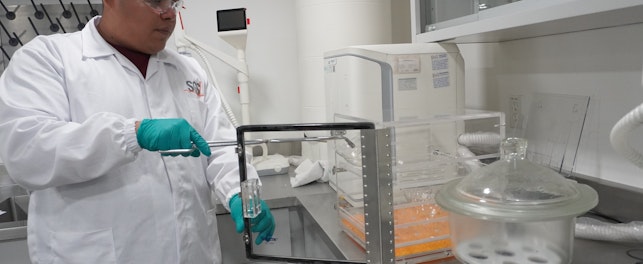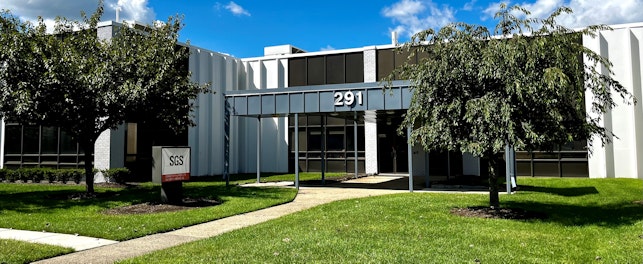Modern vehicles no longer operate in complete isolation. From hazard-avoidance systems to Bluetooth-enabled infotainment, all vehicles use antennae to connect them to the internet of vehicles (IoV).
The global connected vehicle market is projected to grow from USD 59.70 billion in 2020 to USD 191.83 billion in 2028.1 While much of the talk relates to autonomous vehicles, a subject covered in the Consumer Compact article, The Dawn of the Autonomous Vehicle, most new vehicles are not autonomous and yet they are still connected to the IoV.
At the heart of this discussion is, what is the modern car? If you think about your vehicle, it is so much more than just a means of transport. It is also a status symbol, mobile office, communications hub and a place to enjoy entertainment. To do this safely and efficiently, your vehicle needs to be connected to the IoV.
How are vehicles connected?
The simple answer is, through the antenna. Modern vehicles can have as many as ten antennae, each performing a different function.
There are primarily three functions:
- Safety – vehicles communicating with other vehicles, transportation infrastructure, cellular networks, the cloud and even pedestrians using cellular V2X (C-V2X) technology to make travel safer. For more information, read the Consumer Compact article, Safer Roads Through Connectivity
- Entertainment/communication – in-vehicle infotainment systems rely on wireless technologies, such as Wi-Fi and Bluetooth, to create an advanced user experience
- Updating onboard systems – over-the-air (OTA) updates are downloaded to ensure the vehicle continues to operate safely and efficiently
Connection issues
Each OTA antenna or wireless module on a vehicle operates at its own frequency:
- AM/FM/DAB: VHF and UHF
- 2/3/4/5G: 600MHz ~ 7.125GHz
- C-V2X: 5.9GHz
- GNSS: 1.1 ~ 1.7GHz
- Wi-Fi/BT: 2.4GHz & 5~7GHz
- UWB: 3.1~10.6GHz
If one of these devices fails, the result is disconnection. This could result in something comparatively minor, such as an interrupted telephone call or audio/visual lag when connecting to the internet. It could also result in something more serious, such as positioning drift or slow map downloading on navigation systems or delays in real-time data transfer during OTA updates that could impact safety.
Even if safety is not affected, delays and failures will certainly impact the user experience and create user dissatisfaction.
Passive and active testing
Wireless devices must be accurately assessed to ensure they perform effectively in the vehicle. There are two forms of OTA testing – passive and active.
Passive OTA testing primarily measures antenna gain to assess the inherent performance of the antenna when it is not connected to a wireless module. However, because the device under test (DUT) is idle, passive OTA testing does not fully indicate how it will work in real automotive situations.
Instead, manufacturers need to perform active OTA tests on their antenna to assess a device’s overall performance in real-world conditions. This testing solution involves the DUT actively transmitting and receiving data while interacting with other devices and test equipment. It assesses device performance during real-world usage scenarios, including data transfer, voice calls and video streaming, to establish the true user experience.
Full vehicle OTA testing
For the most comprehensive assessment of an antenna’s performance, manufacturers should employ the full vehicle OTA testing strategy. This combines both active and passive OTA testing, using a full anechoic chamber to enable real-world usage tests to be conducted under laboratory conditions.
Only through full vehicle OTA testing will the manufacturer get clear and accurate insights into how a vehicle’s structure and other electronic devices will impact an antenna’s performance.
SGS Solution
In 2022, we opened the world’s first and only third-party multi-probe full vehicle OTA laboratory in Suzhou, Jiangsu Province, China, to support original equipment manufacturers (OEMs) and Tier 1 suppliers operating in the connected vehicle market. The facility supports OTA measurements for 5G FR1 NSA/SA, GNSS, C-V2X and the emerging UWB technologies for automobiles in compliance with the 5GAA Vehicular Antenna Test Methodology (VATM) Standard.
Assessments of everything from components to full vehicles can be conducted in the site’s MVG SG3000 multi-probe antenna measurement and OTA test system. Utilizing a spherical near-field multi-probe test system, the chamber accurately assesses antenna performance in both passive and active OTA testing scenarios, providing manufacturers with the data they need to drive continuous improvements in performance.
Once a device passes our full vehicle OTA testing process, it is eligible to carry the SGS Vehicle Antenna Performance Mark. This demonstrates a device’s compliance with defined standards for performance and builds trust in the product by enabling interested parties to access the test reports via a QR code.
As connected vehicle markets grow and consumers begin to expect greater usability from their devices, manufacturers need to find a way to gain a competitive advantage in increasingly regulated markets. Full vehicle OTA testing at SGS’s Suzhou laboratory offers an independent, trusted approach to assessing antenna performance to ensure minimal device interference while improving safety and the user experience.
Learn more about SGS Wireless Testing
Enjoyed this article?
Find more news and updates in our Consumer Compact newsletter >
Delivered direct to your inbox
Subscribe to Consumer Compact >
References
1 Connected Car Market Size, Growth, Share & Trends Analysis | Forecast [2023-2028]
© SGS Société Générale de Surveillance SA.




